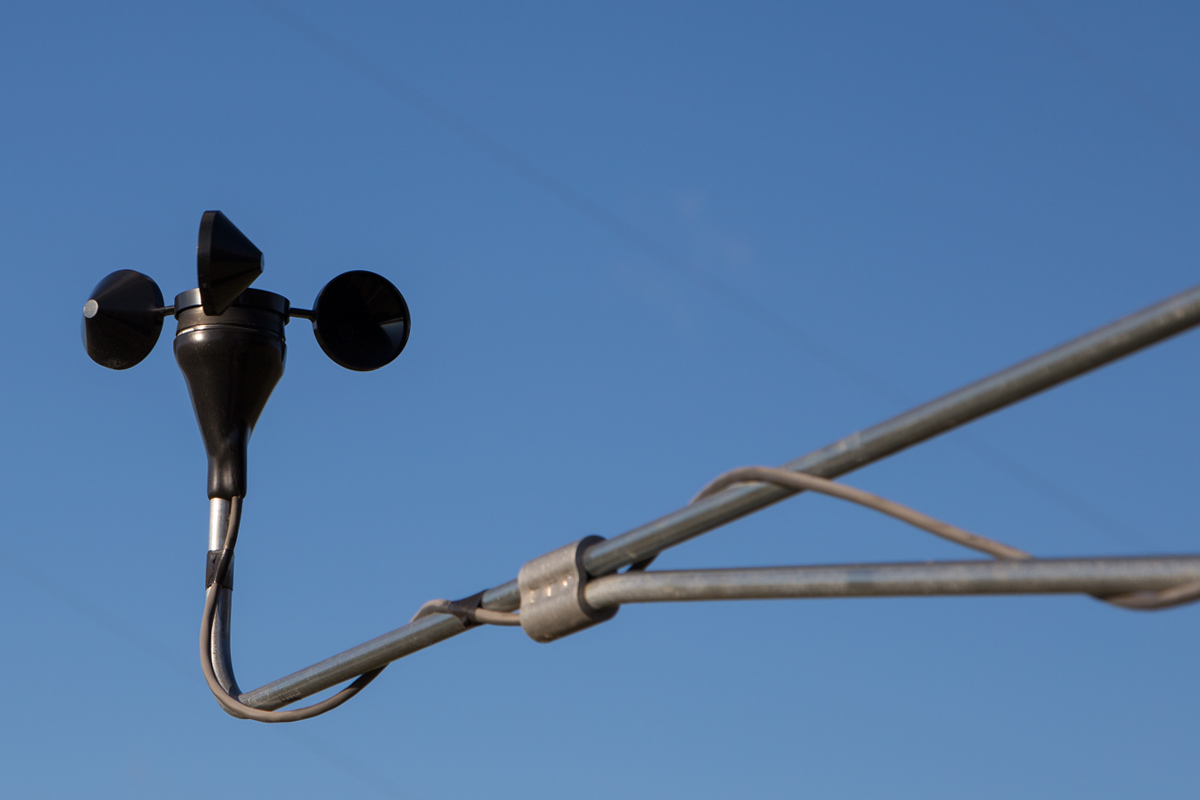Why an Anemometer is Essential for Your Environmental Information Collection
Why an Anemometer is Essential for Your Environmental Information Collection
Blog Article
Discovering the Features and Advantages of Anemometers for Climate Fanatics and Specialists
From cup anemometers to sonic anemometers, each type brings its distinct set of advantages and applications, dropping light on numerous facets of climatic conditions. As we dive into the functions and advantages of anemometers, a much deeper understanding arises not only of dominating weather condition phenomena yet likewise of the wider ramifications for sectors like wind power production and ecological research.
Importance of Anemometers in Weather Surveillance
Anemometers play a critical role in weather monitoring by giving accurate measurements of wind speed, helping in projecting and understanding climate patterns. These instruments, ranging from conventional mug anemometers to modern-day ultrasonic anemometers, are crucial for meteorologists, scientists, and weather condition fanatics alike.

Kinds of Anemometers and Their Applications
The most common kinds of anemometers include mug anemometers, vane anemometers, hot-wire anemometers, and ultrasonic anemometers. Cup anemometers are composed of three or four mugs installed on straight arms that turn with the wind, gauging its speed. Vane anemometers, on the various other hand, use a freely turning vane to straighten with the wind instructions, offering both wind rate and direction measurements.
Each kind of anemometer has its distinct advantages and applications. Mug anemometers are durable and appropriate for general weather condition tracking, while vane anemometers are preferred for directional measurements. Hot-wire anemometers are sensitive to reduced air speeds, making them excellent for interior atmospheres. Ultrasonic anemometers are non-intrusive and offer high accuracy, typically utilized in study and specialized climate tracking applications. Comprehending the attributes and applications of each sort of anemometer is critical for picking the most suitable tool for specific weather condition monitoring requirements.
Advantages of Using Anemometers in Forecasting
In meteorology, the utilization of anemometers uses important advantages for enhancing the accuracy of climate projecting. Anemometers determine wind speed and direction, offering important data for predicting weather patterns. By including wind information into forecasting models, meteorologists can much better understand the movement of climate systems, prepare for modifications in weather, and problem a lot more accurate projections.
Furthermore, anemometers play an important function in evaluating prospective weather risks. Keeping an eye on wind speeds helps forecasters forecast extreme weather condition events such as storms, twisters, and winter season tornados with greater accuracy. This very early warning system makes it possible for authorities to provide prompt alerts and carry out required precaution, minimizing the risks to life and home.
Additionally, anemometers help in optimizing renewable resource production. By examining wind patterns, meteorologists can identify appropriate areas for wind farms and forecast power result, contributing to the reliable generation of wind power.

Anemometers in Wind Power Production
Provided the essential role anemometers play in offering precise wind data for weather condition projecting and threat assessment, their importance reaches the realm of wind power production. Anemometers are vital tools in the area of wind power, where the measurement of wind speed and direction is vital for identifying the expediency and effectiveness of wind generator installments. By accurately measuring wind speeds at differing elevations, anemometers help maximize the placement and style of wind turbines to make best use of energy output.
In wind ranches, anemometers are strategically put to accumulate real-time wind Read Full Report information that is made use of to assess the prospective energy production of a site. This information is instrumental in determining the economic viability of wind energy tasks and in projecting energy generation to make sure grid stability. In addition, anemometers help in checking wind problems to enhance generator performance, avoid damages from high winds, and make certain the security of employees operating in the vicinity of wind turbines.
Enhancing Climate Recognizing With Anemometers

Anemometers play an essential function in enhancing our understanding of microclimates. These localized weather can vary substantially from wider regional forecasts, making it vital to have accurate information for certain locations. anemometer. By tactically putting anemometers in various locations, scientists can collect in-depth info on exactly how wind behaves in different terrains, city settings, or bodies of water
Additionally, anemometers contribute to improving climate forecasting versions by giving real-time data on wind behavior. This details is specifically useful for predicting extreme weather events, maximizing agricultural practices, and sustaining markets like aviation and maritime navigating. Generally, anemometers are indispensable tools that enable us to dive deeper right into the intricacies of weather systems, inevitably resulting in even more precise forecasts and better-informed decisions.
Verdict
To conclude, anemometers play an essential duty in climate monitoring and projecting by measuring wind rate and direction. They are necessary tools utilized by weather lovers and professionals to collect accurate information for predicting weather condition patterns and assessing prospective influences. Anemometers likewise have applications in wind energy click here for more info manufacturing, additional highlighting their value in both meteorology and renewable resource markets. Generally, Web Site anemometers add to enhancing our understanding of weather condition phenomena and enhancing projecting abilities. anemometer.
From cup anemometers to sonic anemometers, each type brings its distinct collection of applications and advantages, dropping light on different elements of climatic problems. These tools, varying from traditional cup anemometers to modern-day ultrasonic anemometers, are necessary for meteorologists, scientists, and climate fanatics alike. The most usual types of anemometers consist of mug anemometers, vane anemometers, hot-wire anemometers, and ultrasonic anemometers. Cup anemometers are appropriate and robust for general weather tracking, while vane anemometers are favored for directional measurements. Anemometers are necessary tools in the field of wind energy, where the measurement of wind speed and instructions is critical for determining the feasibility and efficiency of wind generator installments.
Report this page